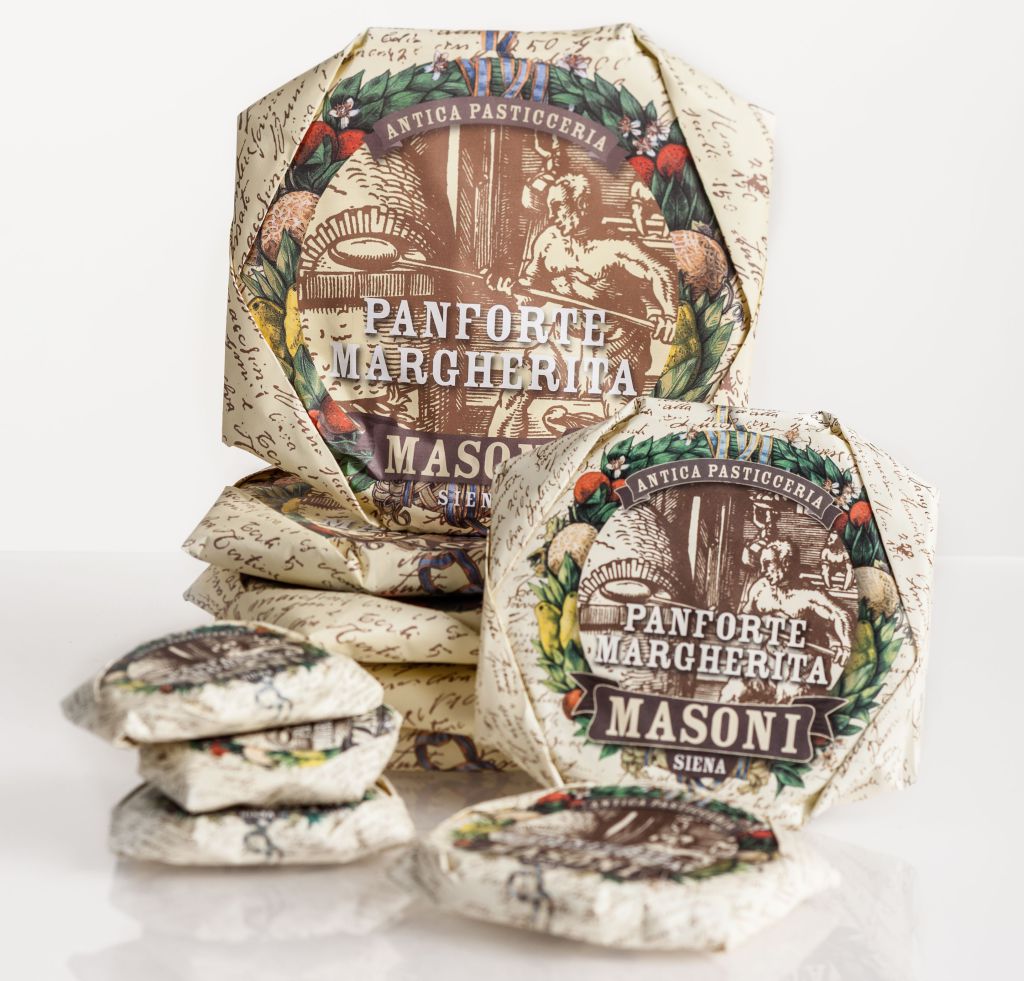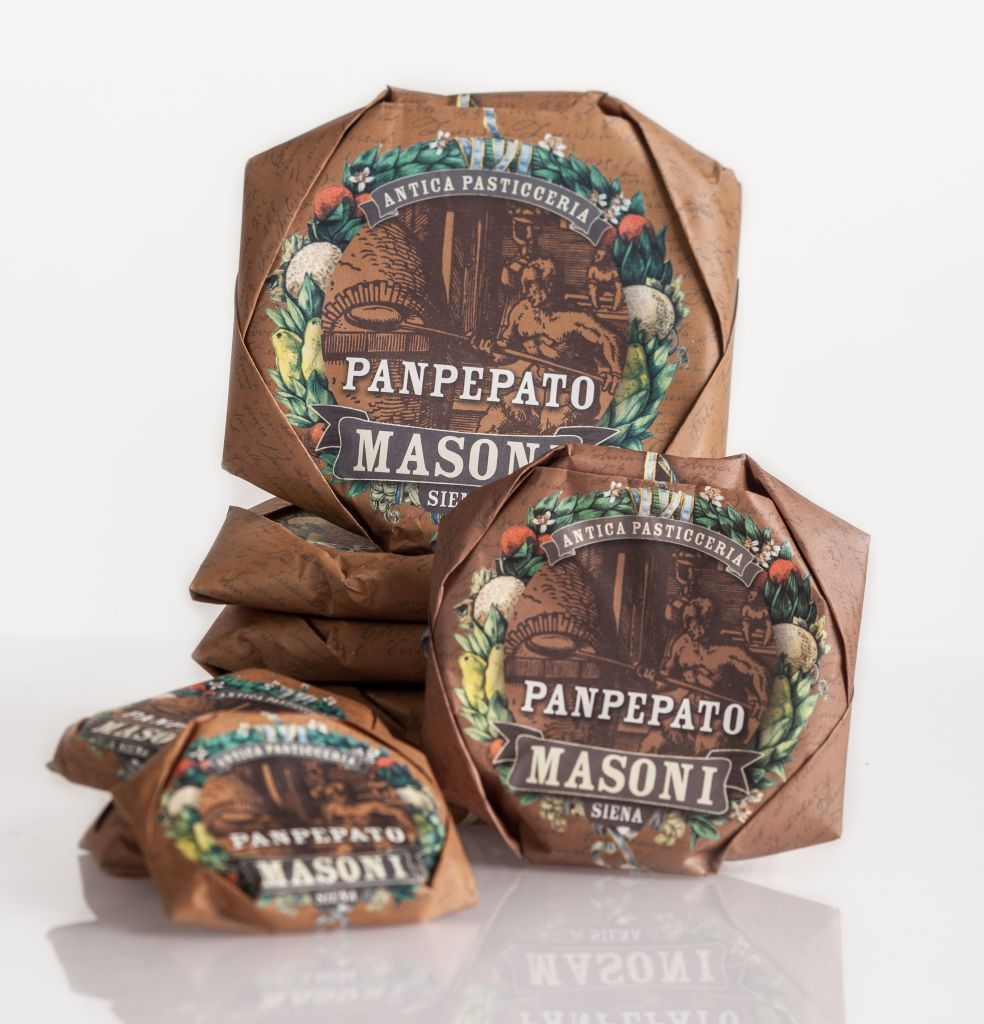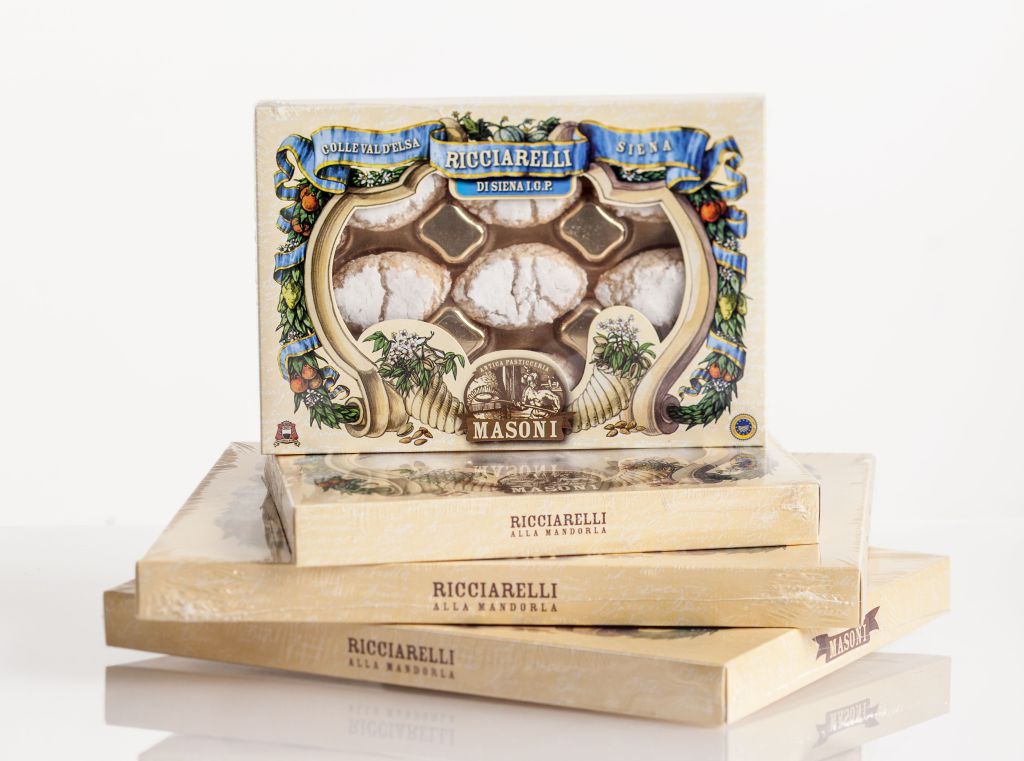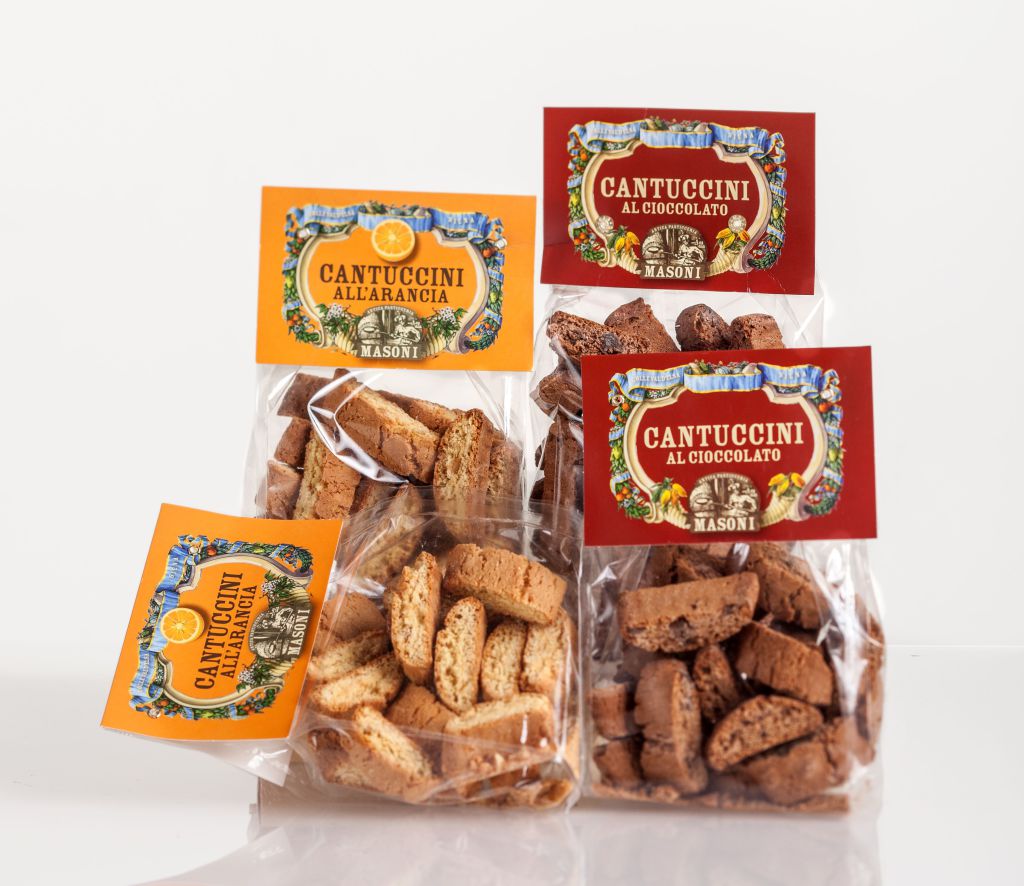 Thanks to almost 130 years of business, Masoni is the longer-lived dynasty in the production of both Panforte (a cake typical of the city of Siena prepared with honey and almonds) and other typical sweets: Panforte, Ricciarelli, Cavallucci, Cantuccini. The distinctive characteristics which have distinguished Masoni family’s long history are simple ingredients, high quality raw materials, a processing which is abreast with the times, but always respecting tradition, and especially the old recipes, handed down from generation to generation. This history is intertwined with the one of its territory, the small town of Colle Val D'Elsa, in the lands of Siena.
Thanks to almost 130 years of business, Masoni is the longer-lived dynasty in the production of both Panforte (a cake typical of the city of Siena prepared with honey and almonds) and other typical sweets: Panforte, Ricciarelli, Cavallucci, Cantuccini. The distinctive characteristics which have distinguished Masoni family’s long history are simple ingredients, high quality raw materials, a processing which is abreast with the times, but always respecting tradition, and especially the old recipes, handed down from generation to generation. This history is intertwined with the one of its territory, the small town of Colle Val D'Elsa, in the lands of Siena.
In 1885, Ippolito Masoni and his wife Petronilla Razzi opened a bakery in Colle Val D'Elsa, and with their production of traditional sweets became a reference point for the whole city, so that in 1920 ‘Alimentaria’ shop was born. It was a real pastry shop, where their son Giovanni and his wife Giuseppina worked. She had learned the art of confectionery in Maioli’s workshop in Florence. This way, Masoni’s products began to spread across the whole Val d'Elsa.
World War II overthrew this land, changing its history forever. Besides the traditional recipes, new ideas related to the incidental needs were born. The limited resources and raw materials, in time of war, lead to the invention of simpler, but always tasty products, such as Panforte fichi e noci, with figs and walnuts, which is still the flagship product of Masoni’s company.
With the reconstruction and economic recovery, the company was re-launched. At the end of the 50's, the production was expanded in order to make it industrial, and the new brand ‘Bonelli and Masoni’ was born, when Giovanna, Pietro and Giuseppina Lupi’s daughter, joined the company. Later, Auro Arnecchi, Giovanna’s husband, began to deal with the sales and administrative departments and gave the final input for the building of the new factory, opened in 1969.
In the 80s, in Italy, too, large-scale retail trade became more and more widespread, and Masoni, too, began to operate in this direction.
In the 90s, a new course was inaugurated: Massimiliano and Gianluca Arnecchi, Giovanna’s sons, joined the company. They began to deal with both commercial department and technical direction, so giving to the company its current configuration and aiming at their presence in foreign markets. Their efforts were especially concentrated in the construction of the new, more modern and functional factory, which was opened in 2008 at Belvedere, in the industrial area of Colle Val'Elsa.
Finally, in 2012 the historic brand ‘Bonelli and Masoni’ was reacquired and reclaimed. It is used in the traditional channel, as well as both wholesale and retail.
Panforte, Ricciarelli, Panpepato, and many other sweet delicacies
Masoni has three distinct brands: ‘Masoni’, ‘Bonelli e Masoni’, and ‘Antica Siena’.
 Its production consists in around 100,000 Panforti and 200,000 Ricciarelli, mainly for the Italian market, even if 10% is assigned to foreign markets, in England, United States, Australia, Dubai. In addition, in 1992 the company 'Lucia Cioccolato' was acquired, for the production of chocolate and Easter eggs, and in 2007 an ancient wood roasting, one of the few still remaining in Italy, which produces coffee with ‘Caffè Coimbra’ brand.
Its production consists in around 100,000 Panforti and 200,000 Ricciarelli, mainly for the Italian market, even if 10% is assigned to foreign markets, in England, United States, Australia, Dubai. In addition, in 1992 the company 'Lucia Cioccolato' was acquired, for the production of chocolate and Easter eggs, and in 2007 an ancient wood roasting, one of the few still remaining in Italy, which produces coffee with ‘Caffè Coimbra’ brand.
But which is the secret of the success met by a family who has devoted more than a hundred year of their history in the Tuscan confectionery production? Massimiliano Arnecchi, who today is the responsible person for the commercial direction, reveals it to us: «Love for what we do and what those who have gone before us have done, attention to the quality of raw materials, technology upgrades in order to improve the quality, and especially attention to image and packaging.
The quality of raw materials, selected and natural, is a fundamental principle for the processing of our products: only almonds, and never apricot kernels, pure chocolate and never substitute, candied orange, citron and melon, as tradition teaches, for Masoni Panforte».
Many products in the Masoni catalogue are still prepared with old family recipes.
Panforte Margherita was prepared for the first time in 1879, on the occasion of Queen Margherita’s visit to Siena, to see the Palio.
Panpepato (prepared with flour, honey, almonds and candied fruit) isthe oldest of the types of panforte. Its origins are in the nunneries, where such spices as cinnamonand allspicewere used, giving it aparticularstrong flavour.
 Ricciarelli alla mandorla, with almonds, whose origin dates back to the Middle Ages, are prepared by chopping sugar and almonds, to which egg white and honey are added, and then sprinkled with powdered sugar and baked in the oven. Formerly the marzipans were manufactured in nunneries or apothecaries’ and were called ‘marzapanetti alla Senese’ or ‘morzelletti’. They were sold wrapped in tissue paper with the picture of two winged horses, or for important banquets they were decorated with gold in very thin layers.
Ricciarelli alla mandorla, with almonds, whose origin dates back to the Middle Ages, are prepared by chopping sugar and almonds, to which egg white and honey are added, and then sprinkled with powdered sugar and baked in the oven. Formerly the marzipans were manufactured in nunneries or apothecaries’ and were called ‘marzapanetti alla Senese’ or ‘morzelletti’. They were sold wrapped in tissue paper with the picture of two winged horses, or for important banquets they were decorated with gold in very thin layers.
Ricciarelli al cioccolato were born with coverage of extra dark chocolate which surrounds them. The origins of both Cavallucci and Berriquocoli, too, date back to the Middle Ages: theapothecaries blended such simple ingredients as flourwith more valuable ones, such aswalnuts, hazelnuts,andcandiedorangeandcitron in order torealize their biscuits.
 Cantuccini date back to the early middle Ages and they were offered during feast occasions with Vin santo wine. Because of their high energy content, they were consumedby those wholeft forlong pilgrimagesor whodidheavy work.
Cantuccini date back to the early middle Ages and they were offered during feast occasions with Vin santo wine. Because of their high energy content, they were consumedby those wholeft forlong pilgrimagesor whodidheavy work.
One of the oldest sweets of Siena is Copata, round, prepared with sugar, honey, egg white, and peeled and chopped almonds. The dough is squeezed by hand between two wafers.
On the occasion of the Feast of All Saints and All Souls, Pan de' Santi was prepared. It was an ancient sweet prepared withsugar, flour, nuts, raisins,spices.
Other typical Tuscan biscuits are Brutti ma buoni, prepared with chopped hazelnuts, Ossi di morto, prepared with sugar, egg whites, and almonds, which owe their name to the fallen in the battles of Montaperti and Montalcino, and Pane del Pescatore, a shortbread, rich in raisins, almonds and pine nuts prepared in the ovens of Florence and used by fishermen of Arno.
Torta Lucia is an exclusive recipe of Masoni’s, prepared with wafer, gianduia and hazelnut paste, as well as Panforte fichi e noci, an oldrecipe dating back to the periodof the war, recovered in 2001,and which became one of themost popularandbest selling products.
